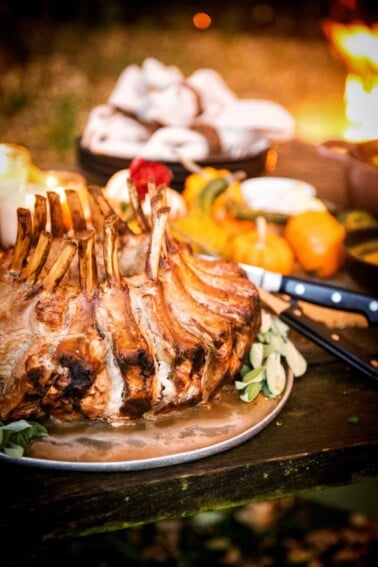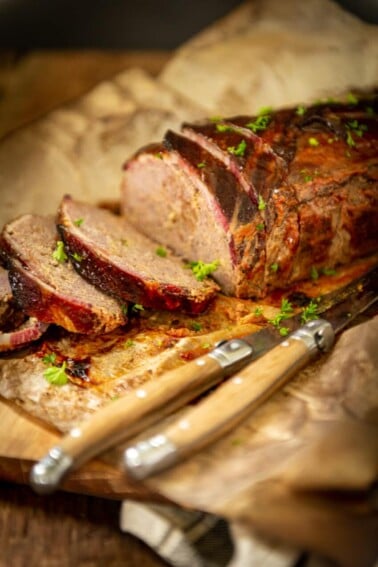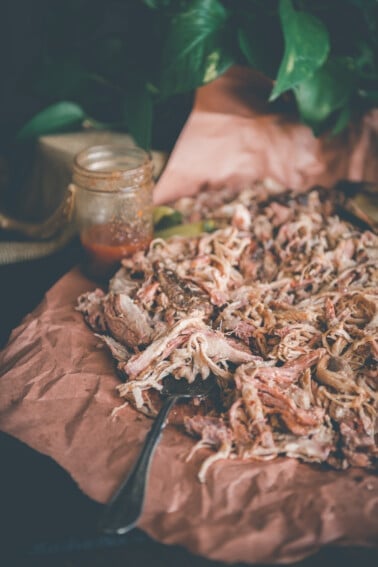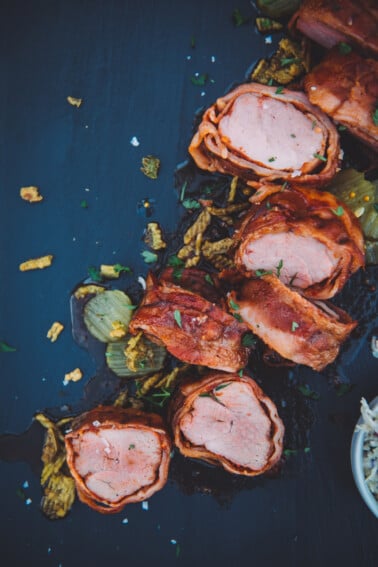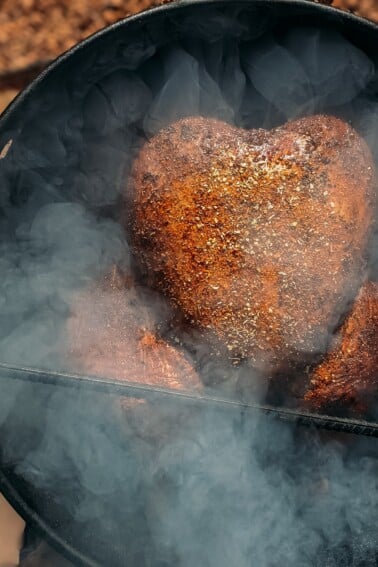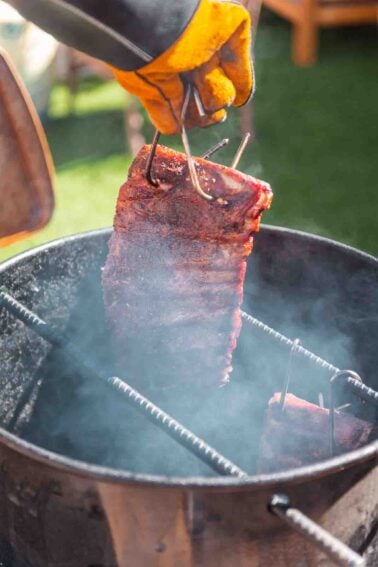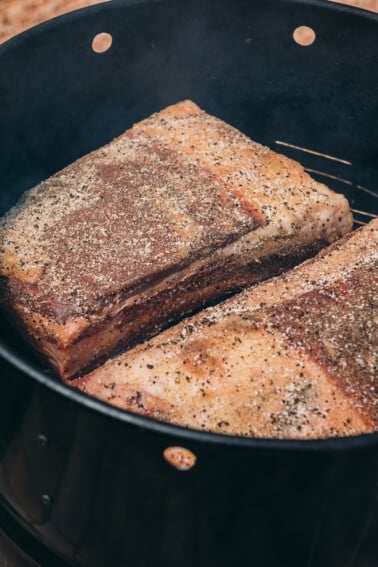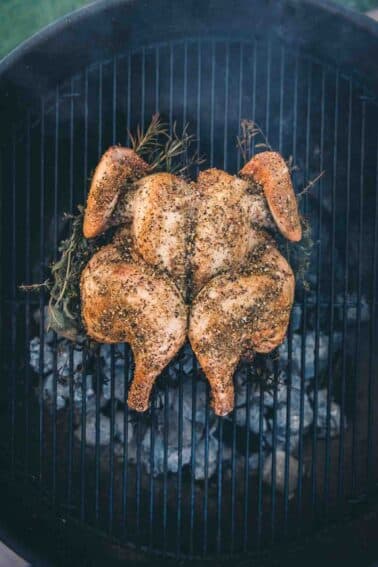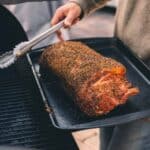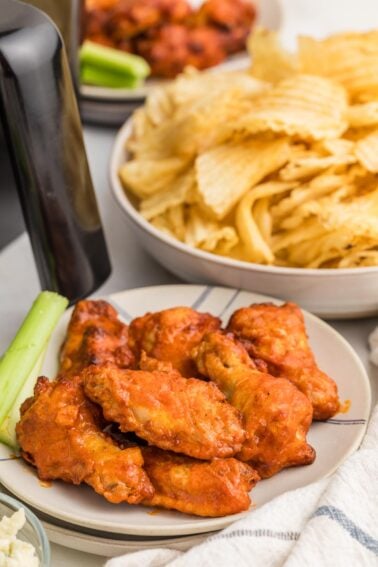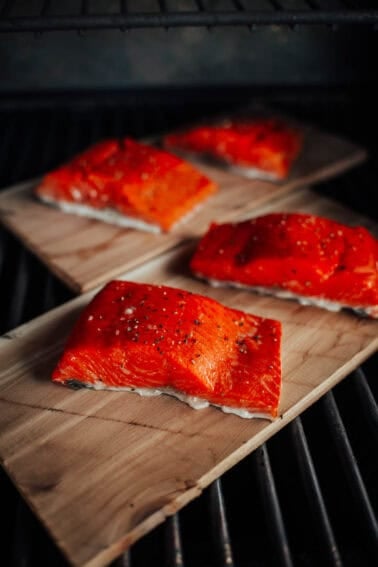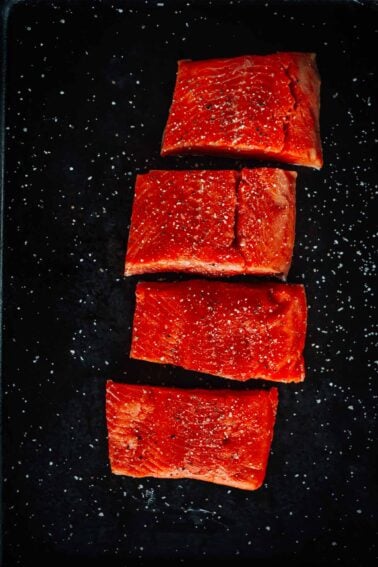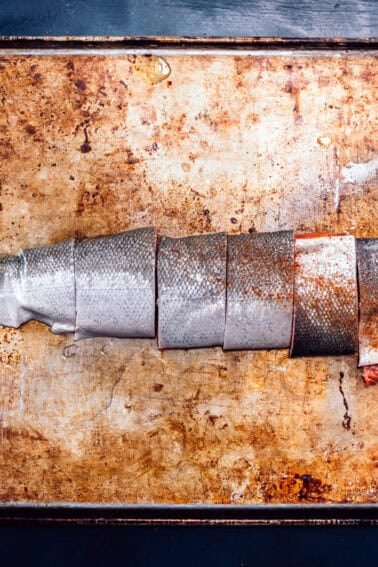Choosing the right wood for smoking pork recipes can transform your barbecue from good to unforgettable. It’s not just about the smoke – it’s about creating layers of flavor that complement the rich, succulent meat.
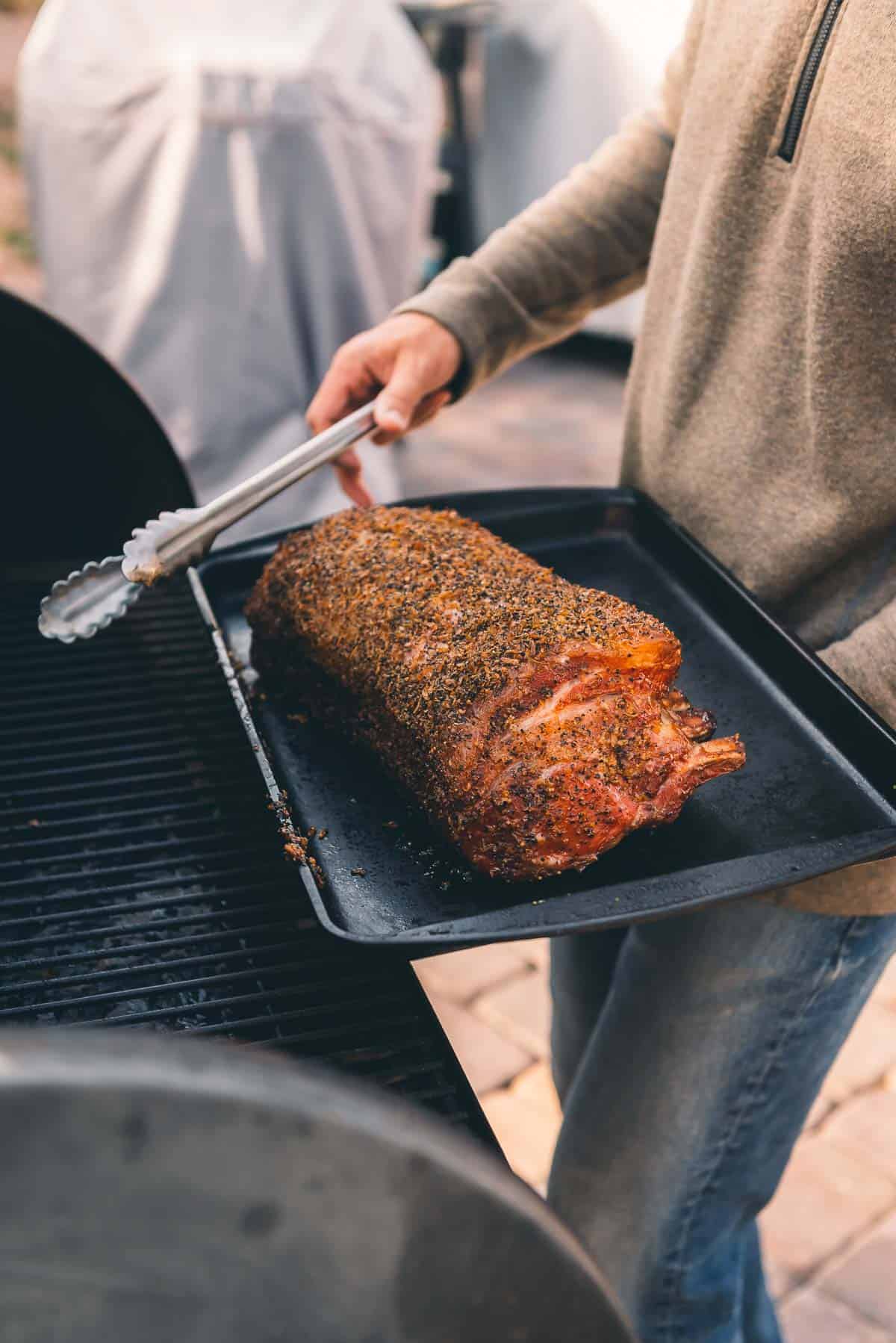
Table of Contents
- Top 5 Best Woods for Smoking Pork
- Girl Carnivore Recommends
- The Best Smoked Pork Recipes
- Understanding Smoking Wood
- Factors to Consider When Choosing Smoking Wood for Pork
- Tips and Techniques for Smoking Pork with Wood
- Preparing the Wood for Smoking
- Choosing the Right Amount of Wood for Ideal Smoke Production
- Properly Combining Different Woods for Unique Flavor Profiles
- Maintaining Consistent Temperature Throughout the Smoking Process
- More smoking wood guides
Unlock the secret to mouthwatering smoked pork with our guide to selecting the perfect smoking wood. From classic hickory to fruity apple, we’ll help you navigate picking out a wood type to enhance your pork’s flavor profile and create barbecue that’ll have your guests raving.
Top 5 Best Woods for Smoking Pork
Apple Wood
- Flavor Profile: Mild, sweet, and fruity. Apple wood burns clean and slow, making it ideal for longer smokes like Carolina pulled pork or ribs. It pairs beautifully with the natural sweetness of pork, enhancing its flavor without overpowering it. This wood is quite versatile and works well with most cuts of pork.
Cherry Wood
- Flavor Profile: Mild, sweet, and slightly fruity with a hint of smoke. Cherry wood burns clean and at a medium pace, making it great for all types of pork, especially smoked pork loin. It imparts a subtle sweetness and a beautiful reddish hue to the meat.
Hickory Wood
- Flavor Profile: Strong, smoky, with a bacon-like aroma. Hickory is a classic choice for smoking pork, especially Traeger 3-2-1 ribs, smoked St. Louis style ribs, and ancho smoked pork. It burns hot and slow, infusing the meat with a deep smoky flavor. Hickory can be overpowering if used too much, so start slow and adjust to your preference.
Oak Wood
- Flavor Profile: Rich, smoky, with a slightly earthy or peppery undertone. Oak is another popular option for smoking pork, offering a more subtle smoke flavor than hickory. It burns slow and steady, making it perfect for longer smokes like whole shoulders, butts, or vertical smoked pork ribs.
Maple Wood
- Flavor Profile: Maple wood is mild, sweet, and slightly maple syrup-like. It is a great choice for adding a touch of sweetness to pork, particularly smoked spiral ham or bacon. It burns clean and slow, making it suitable for longer smokes. Use maple wood sparingly to avoid an overly sweet flavor.
Girl Carnivore Recommends
We use Western Wood chunks and chips for smoking. They are kiln-dried and produce a great flavor. You can easily find them from coast to coast in most grocery stores (in the grilling section) or at Walmart or hardware stores.
We use Cowboy Brand Hardwood Lump Charcoal or Charcoal Briquets because they have no added fillers or chemicals. The combo of Western Wood and Cowboy gives us the best smoky flavor.
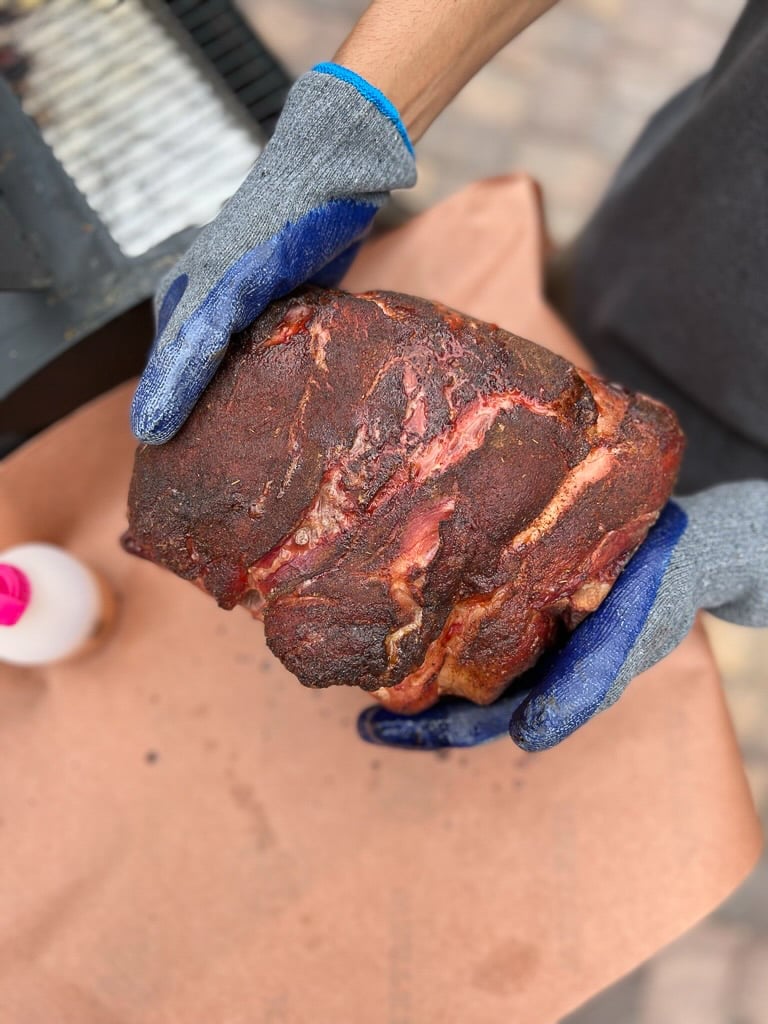
The Best Smoked Pork Recipes
Recipes With Pork
Smoked Pork Crown Roast
Recipes With Pork
Bacon Wrapped Meatloaf
Recipes With Pork
Traeger Pork Butt
Recipes With Pork
Smoked Bacon Wrapped Pork Tenderloin
Understanding Smoking Wood
Smoking meat is an art form, and a big part of achieving that delicious smoky flavor comes down to using the right wood. But what exactly is smoking wood, and how do you choose the perfect type for your next barbecue masterpiece?
What is Smoking Wood?
Forget about leftover firewood – smoking wood is a whole other ball game. It comes in various forms like chips, chunks, and even logs, all specially chosen from different trees. These woods are picked for their unique smoky flavors that gently infuse your food while it cooks.
Because pork comes in various cuts and sizes, the type of wood chips you choose can make a big difference.
Smoking with wood chips is a great option for smaller cuts like pork chops or tenderloin, as they burn faster than larger wood chunks. You can use wood chips when smoking with wood chips on a gas grill and a charcoal grill.
If you have a pellet grill, you can also use wood pellets for smoking pork.
However, larger cuts of pork, such as a smoked rack of pork or smoked pork spare ribs, may require larger pieces of wood, like wood chunks or logs.
Different Types of Smoking Wood Available
There are fruit woods like apple, cherry, and peach that impart a sweet and mild smokiness, perfect for delicate cuts of pork like loin or tenderloin.
Woods like oak and maple offer a more earthy, nutty flavor profile that can add complexity to any pork dish, from ribs to pulled pork.
Finally, hickory has a bacon-like taste and mesquite has a bold smoky flavor.
As you can see, choosing the right type of wood can greatly affect the flavor of your meat. Using the right wood elevates your pork from good to amazing, so don’t underestimate the power of wood smoke!
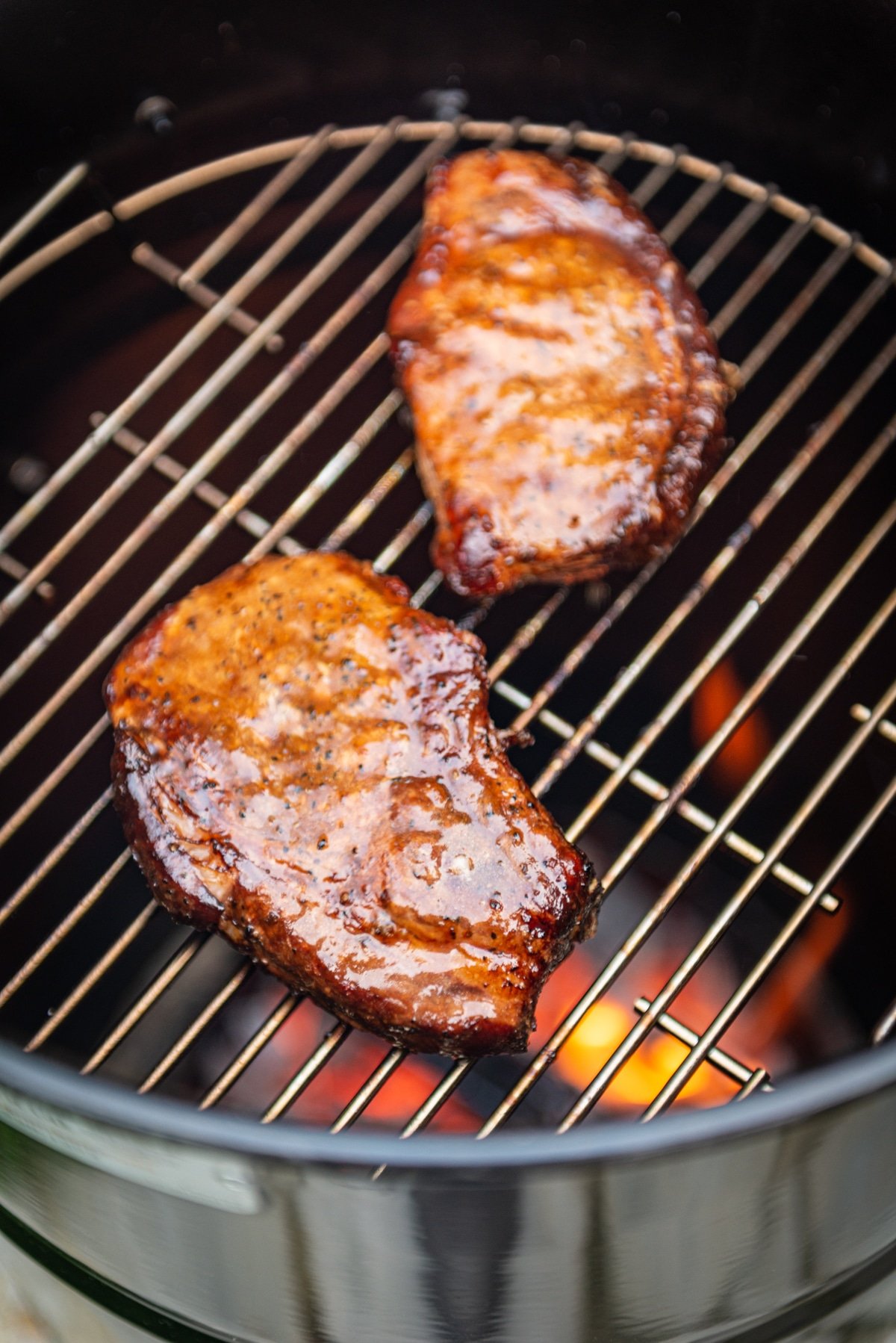
Factors to Consider When Choosing Smoking Wood for Pork
- Flavor profiles: Exploring different wood flavors and their compatibility with pork.
- Intensity levels: Understanding the strength and potency of various wood types.
- Smoking time: How different woods burn and their impact on cooking time.
Tips and Techniques for Smoking Pork with Wood
Preparing the Wood for Smoking
When it comes to smoking wood, there are two things to keep in mind: don’t soak woodchips and using seasoned wood.
Soaking wood chips might seem intuitive, but it actually creates steam instead of flavorful smoke.
Secondly, avoid using green or freshly cut wood. Green wood hasn’t had time to dry out properly, which can lead to an excessively hot fire and potentially release unwanted chemicals that can affect the taste of your meat. Stick with kiln dried, seasoned wood chips for the best smoking experience.
Choosing the Right Amount of Wood for Ideal Smoke Production
The amount of wood you use depends on several factors, including the type of smoker (electric, gas, charcoal), the size and cut of meat, and your desired smoke intensity.
- Start Low, Go Slow: It’s always better to start with less wood and add more as needed. Too much wood can overpower the meat and create a bitter taste.
- Electric Smokers: These typically use less wood due to their efficient design. A handful of wood chips might be enough.
- Charcoal and Gas Smokers: These may require more wood for consistent smoke production. Start with a couple of handfuls of chips in a smoker box on a gas grill or a few larger chunks on a charcoal grill, adding more as the smoke subsides.
Properly Combining Different Woods for Unique Flavor Profiles
Combining different types of wood allows you to create unique flavor profiles. Here are some popular combinations:
- Milder Woods + Stronger Woods: For a balanced flavor, try pairing a mild fruit wood like apple or cherry with a stronger wood like hickory. This adds a touch of sweetness to the smokier base.
- Fruity Woods + Nutty Woods: Combine apple or cherry wood with pecan wood for a complex flavor profile with a hint of sweetness and nuttiness. This is a great option for pork roasts.
Maintaining Consistent Temperature Throughout the Smoking Process
Maintaining a consistent temperature is crucial for proper slow cooking and achieving the desired texture in your smoked meats. Here are some tips:
- Use a Reliable Thermometer: Invest in a good quality meat thermometer and a smoker thermometer. Monitor both the internal temperature of the meat and the smoker temperature throughout the cook.
- Adjust Vents and Dampers: Most smokers have vents or dampers that control airflow and temperature. Learn how to adjust them to maintain a steady temperature within the recommended range for your specific cut of meat.
More smoking wood guides
Different woods bring out amazing flavors in pork – explore and experiment to find your perfect match! The right wood can elevate your smoked pork to new heights, so fire up your smoker and prepare for juicy, flavorful results!
We recommend starting with a few handfuls of wood chips, a handful of chunks, or 1-2 logs (depending on the size of your pork cut) to start. You can always add more later.
You can smoke almost any pork cut! But the top choices are pork butt, pork shoulder, and ribs!
Nope! Liquid smoke, a concentrated wood smoke extract, offers convenience with a few drops or a brushstroke. However, its flavor can be one-dimensional and vary by brand.
You can only get authentic barbecue flavor by smoking with real wood on a grill. Wood smoke uses real wood chunks for a natural smoky taste. The flavor profile depends on the wood type, offering a range from fruity sweetness to bold, bacon-like smokiness. The smoke also infuses the meat with a subtle aroma that liquid smoke can’t replicate.
